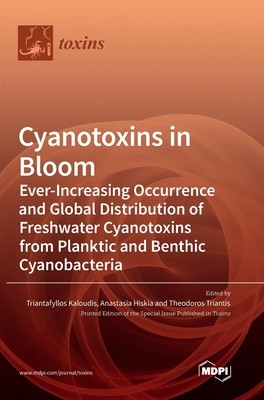
- We will send in 10–14 business days.
- Publisher: MDPI AG
- ISBN-10: 3036539220
- ISBN-13: 9783036539225
- Format: 17 x 24.4 x 3 cm, hardcover
- Language: English
- SAVE -10% with code: EXTRA
Cyanotoxins in Bloom (e-book) (used book) | bookbook.eu
Reviews
Description
At present, cyanobacteria and their toxins (also known as cyanotoxins) constitute a major threat for freshwater resources worldwide. Cyanotoxin occurrence in water bodies around the globe is constantly increasing, whereas emerging, less studied or completely new variants and congeners of various chemical classes of cyanotoxins, as well as their degradation/transformation products are often detected. In addition to planctic cyanobacteria, benthic cyanobacteria, in many cases, appear to be important toxin producers, although far less studied and more difficult to manage and control. This Special Issue highlights novel research results on the structural diversity of cyanotoxins from planktic and benthic cyanobacteria, as well as on their expanding global geographical spread in freshwaters.
EXTRA 10 % discount with code: EXTRA
The promotion ends in 10d.04:37:34
The discount code is valid when purchasing from 10 €. Discounts do not stack.
- Publisher: MDPI AG
- ISBN-10: 3036539220
- ISBN-13: 9783036539225
- Format: 17 x 24.4 x 3 cm, hardcover
- Language: English English
At present, cyanobacteria and their toxins (also known as cyanotoxins) constitute a major threat for freshwater resources worldwide. Cyanotoxin occurrence in water bodies around the globe is constantly increasing, whereas emerging, less studied or completely new variants and congeners of various chemical classes of cyanotoxins, as well as their degradation/transformation products are often detected. In addition to planctic cyanobacteria, benthic cyanobacteria, in many cases, appear to be important toxin producers, although far less studied and more difficult to manage and control. This Special Issue highlights novel research results on the structural diversity of cyanotoxins from planktic and benthic cyanobacteria, as well as on their expanding global geographical spread in freshwaters.


Reviews